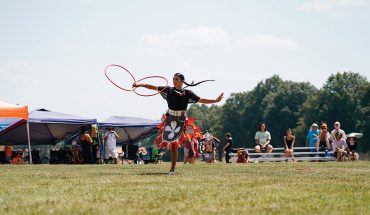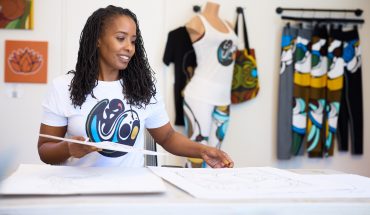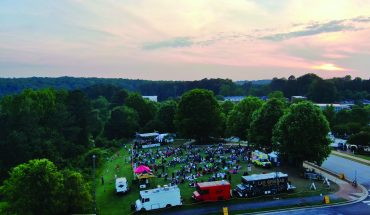by Jessie Ammons
Today, Cameron Village is a manicured shopping center near the heart of downtown filled with boutiques and eateries connected by brick sidewalks. Newcomers might not know that it has long played a fond and memorable role in the days – and nights – of the city. In a recently released collection of oral histories and written memories by Raleighites who knew it when, stories of the lively early days of Cameron Village provide a glimpse into its past.
J. W. York developed Cameron Village in 1947 to provide post-war housing on the outskirts of town. For convenience, stores like a Sears and Kerr Drug were added to the site plan. As the shopping options expanded, Cameron Village became the first shopping center built between Atlanta and Washington, D.C. “This spot has been here as Raleigh grew from a small town to what it is today, and it’s changed alongside it,” says Pat Boyle, executive director of the Cameron Village Merchants’ Association. “Not many places have the history that we do.”
In the ’70s, an underground level of music venues, nightclubs, and an arcade called the Cameron Village Subway opened and became all the rage. Last year, “the Underground” re-opened for a one-night-only black tie charity gala. Boyle says planning that event inadvertedly unearthed a slew of fascinating personal recollections. “So many people have such positive connections to this place that have lasted almost 70 years,” she says. “The whole thing was – and is – just really cool.” Too cool to ignore. The Merchants’ Association decided to collect as many of those memories as it could.
Some of the memories are, as Boyle says, just really cool. Among the The Underground’s venues was a spot called the Frog & Nightgown, and another called the Pier, known for booking big-name bands of every genre. It filled a void in the Oak City. “We’d just come off Woodstock; we’d just come off Love Valley. We were looking for music,” says Sandra Simpson, who worked there. She remembers the spot’s approachable grooviness. “You would go to the Pier on any night and not know if you’d see Iggy Pop dancing on stage or Doc Watson singing folk music. I remember when I was a waitress, this dentist who came to see Lester Flatt every time told me he’d give me 50 bucks if I introduced him to Lester. It was this easy: You knocked on the door, said, ‘Mr. Flatt, would you mind if I introduce you to one of our customers?’ … We just had so much fun.”
Indeed, the Pier’s former manager Butch Smith can still rattle off a laundry list of artists he worked with. “The Allman Brothers Band used to play down there all the time, along with the Nitty Gritty Dirt Band; The Police, the Ramones, Jimmy Buffet; Martin Mull and Steve Martin both played there. Emmylou Harris was over playing at State and dropped in a little bit. Don McLean. In my house right now I have close to 6,000 albums, and probably half of them are signed by these bands,” Smith says. “It was the only place to be. There weren’t any other clubs around.”
But not all of the unearthed memories are carefree; some paint a frank picture of a time and a place. Among them is the story of a woman named Barbara, who recalls a shopping trip with her mother and their family maid, Sarah, around Christmastime in 1962. While her mother shopped, Barbara and Sarah went to a sandwich shop for a Coke. Sarah was refused service for being African-American. “I have never seen my mother so mad in all of my life,” Barbara remembers. “I remember so well her marching all of us right back to the shop, where we went in and she ‘let them have it’ in the nicest way that a Southern lady could do,” she says. “The early ’60s were a time of transition for African-Americans, and my mother was an integral part of that change, standing up for someone who was special to us and part of our family. Love is colorblind, and still is.”
Boyle says the hope is to preserve these pieces of history. “Barbara’s story didn’t make the paper then,” she points out. “It was just one person’s experience. But unless we share these, we never realize what an impact one person can have.”
A handful of the stories are recorded – including Barbara’s, Sandra Simpson’s, and Butch Smith’s – and they cover a gamut of topics. There are first dates and marriage proposals; annual family traditions and formative adolescent memories; concerts and triumphant marathon finishes.
“We never expected to find the depth that we found,” Boyle says.
Peruse them on the shopping center’s website, where you can share your own stories, too. “It’s crazy to think that a shopping center is connecting to people’s personal history and family history,” Boyle says. The shops and businesses collectively consider this project their contribution to the development’s legacy, she says. “When Cameron Village was built, its role was to build a community: as in, housing and shopping, the brick-and-mortar pieces. What it’s evolved into is a community of people and their experiences and their lives. It’s turned into a bigger-picture movement. This is now about the place as a conduit for community.”





